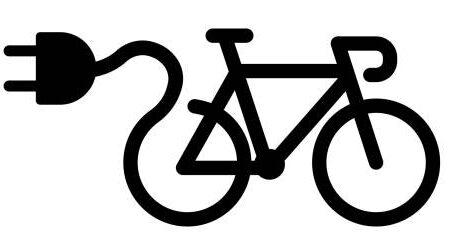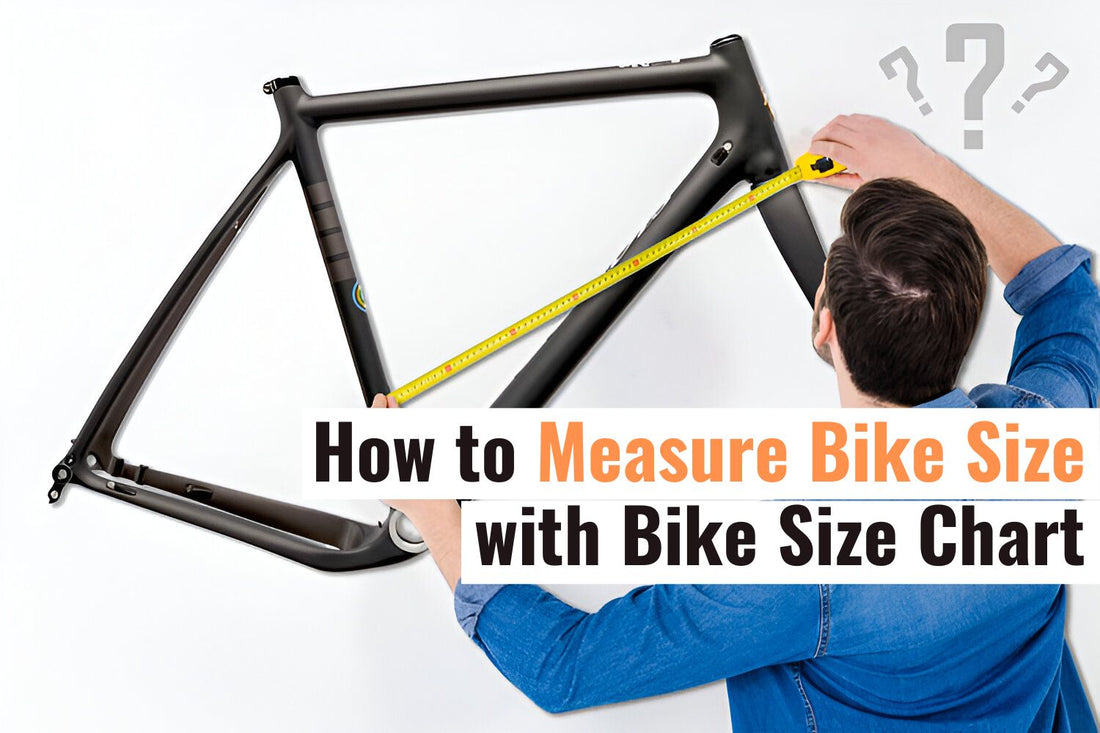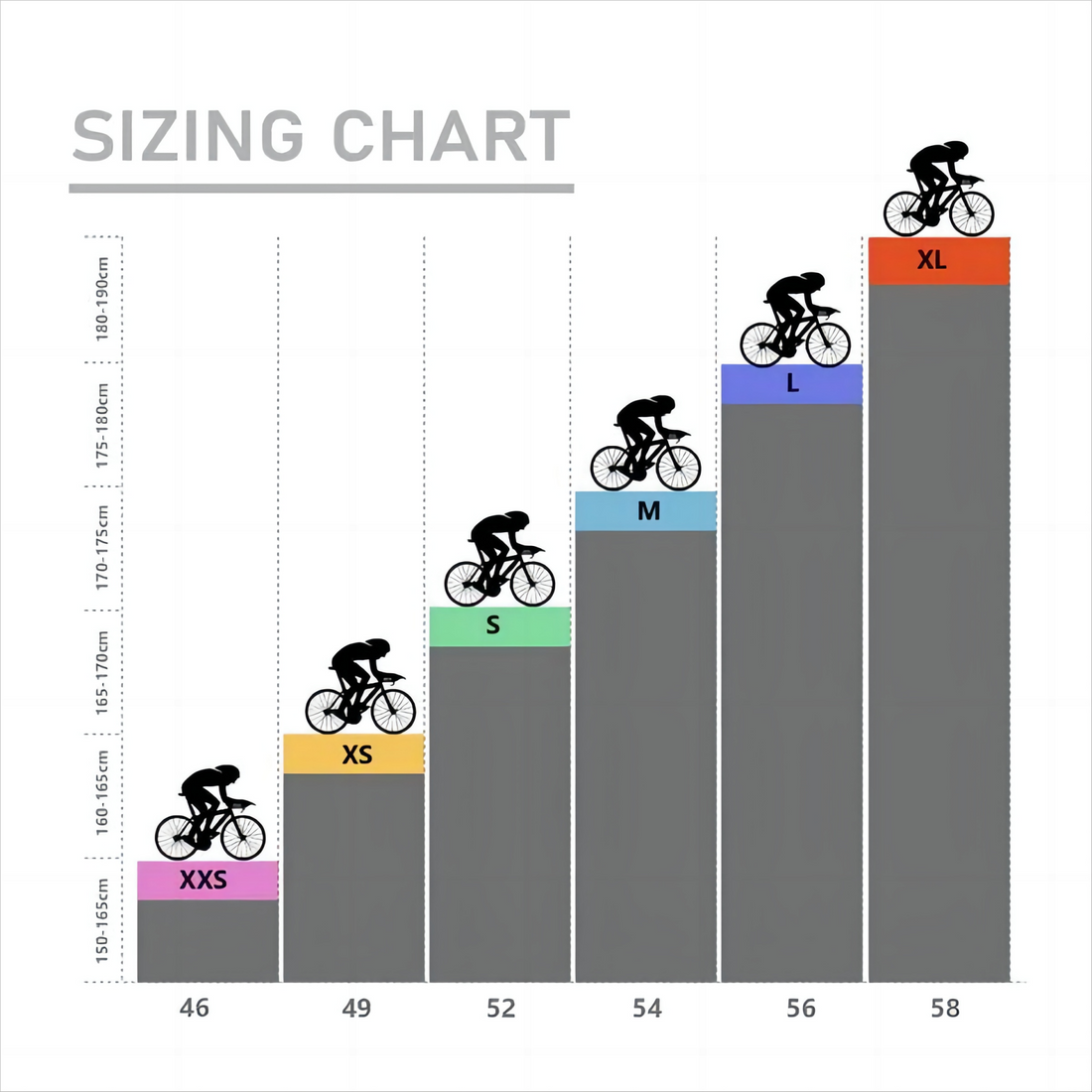Why Correct Bike Fit Matters
Proper bike fit is crucial for a comfortable, efficient, and injury-free cycling experience. An ill-fitting bike can lead to a range of problems, from minor aches and pains to chronic discomfort and even long-term health issues. The correct bike size and adjustments enhance power output, improve handling, and allow riders to enjoy longer rides with less fatigue. To measure a bike size accurately helps prevent pain in the back, neck, knees, and wrists, which can arise from an improper riding posture. Furthermore, a well-fitted bike allows for optimal muscle engagement, leading to greater efficiency and reduced strain on joints.
Different riding styles necessitate different bike fits. A road cyclist, focused on speed and aerodynamics, will typically prefer a more aggressive, stretched-out position. This position prioritizes power transfer and minimizes wind resistance. Conversely, a mountain biker, navigating challenging terrain, requires a more upright and maneuverable setup. This allows for better control and responsiveness. Hybrid and commuter bikes generally favor a more relaxed, upright posture, prioritizing comfort and visibility in urban environments. Understanding these nuances is essential when you measure a bike size to ensure it complements your specific cycling needs and goals.
Ignoring proper bike fit can have serious consequences. Continued riding on a bike that is too large or too small can lead to repetitive stress injuries, such as tendinitis, carpal tunnel syndrome, and lower back pain. These injuries can sideline cyclists for weeks or even months, hindering their progress and diminishing their enjoyment of the sport. Investing the time and effort to measure a bike size and achieve a proper fit is an investment in your long-term health and cycling performance. The right fit will allow you to ride further, faster, and more comfortably, maximizing your enjoyment of every ride. By considering riding style and properly measuring, cyclists can optimize their fit for both performance and comfort, measure a bike size and prevent unnecessary strain.
How to Determine Your Ideal Bicycle Frame Size
Determining the correct bike frame size is crucial for a comfortable and efficient riding experience. The primary measurements used to measure a bike size are inseam and overall height. These measurements provide a starting point for finding a bike that fits your body proportions. This section provides a step-by-step guide to accurately measure a bike size using these key metrics.
To accurately measure a bike size, start with your inseam. Stand with your back against a wall, wearing the shoes you typically ride in. Place a book or a similar flat object between your legs, mimicking the position of a bicycle saddle. Ensure the book is snug against your crotch. Have someone measure the distance from the top of the book to the floor. This measurement, in inches or centimeters, represents your inseam. Some people prefer to measure their inseam without shoes for a more precise measurement, which can then be adjusted based on the typical shoe sole thickness. Accuracy is paramount; therefore, repeat the measurement a few times to ensure consistency. Note that small variations can impact the recommended frame size.
Next, measure your overall height. Stand straight against the wall, without shoes, and measure the distance from the floor to the top of your head. This provides a general reference point, but inseam is typically the more critical measurement for determining frame size. Once you have both your inseam and height measurements, consult bike sizing charts provided by various manufacturers. These charts typically correlate inseam and height ranges with corresponding frame sizes (e.g., S, M, L, or numerical sizes in centimeters or inches). Remember that sizing can vary between brands and bike types. Using both measurements will help you narrow down the appropriate size range to measure a bike size and eventually find your perfect ride.
Understanding Bike Sizing Charts and Terminology
Bike sizing charts can initially appear complex, but understanding their key elements is crucial to accurately measure a bike size and select the right frame. Manufacturers often use different sizing conventions, leading to potential confusion. Some use traditional S, M, L (Small, Medium, Large) designations, while others employ numerical sizing, typically in centimeters or inches, representing the seat tube length. This number might not directly equate to the physical seat tube length due to varying frame geometries, so always refer to the manufacturer’s specific chart. To properly measure a bike size, it is always important to check manufacturer’s chart.
Beyond basic size designations, several key terms are essential for understanding bike fit. “Reach” refers to the horizontal distance from the bottom bracket to the head tube. “Stack” is the vertical distance from the bottom bracket to the top of the head tube. These measurements are vital because they determine the bike’s overall riding position and how stretched out or upright a rider will be. A bike with a longer reach will generally result in a more aggressive, aerodynamic posture, while a shorter reach allows for a more upright and comfortable position. “Standover height” is another critical measurement, indicating the distance from the ground to the top of the top tube. Adequate standover clearance ensures that the rider can comfortably straddle the bike while standing, preventing potential injury. If you want to measure a bike size, consider also “standover height”.
To illustrate these concepts, consider a couple of examples. Trek, a reputable brand, often provides detailed sizing charts on their website, correlating rider height and inseam with their frame sizes (e.g., 54cm, 56cm, etc.) and corresponding S, M, L designations. Similarly, Specialized offers sizing tools that incorporate height, inseam, and even arm length to recommend the ideal frame size. These tools often include geometry charts showing stack and reach measurements for each frame size. Remember that these charts are starting points. Factors like flexibility, riding style, and personal preference ultimately influence the final bike size selection. Consulting multiple charts and, most importantly, test riding bikes are crucial steps in the process to measure a bike size and finding the perfect fit. Always measure a bike size before purchasing.
Considering Different Bike Types and Their Sizing Nuances
Bike sizing is not universal; it varies significantly across different bike types. A rider must understand these nuances to properly measure a bike size and select the correct frame. Road bikes, mountain bikes, hybrid bikes, and gravel bikes all have different geometries and intended uses, which influence their ideal sizing. For instance, a rider might typically require a larger frame size for a road bike compared to a mountain bike, even with the same inseam measurement. This difference arises because mountain bikes often prioritize maneuverability on technical trails, necessitating a more compact frame.
Road bikes, designed for speed and efficiency on paved surfaces, usually feature longer top tubes and lower stack heights. This design encourages a more stretched-out and aerodynamic riding position. Mountain bikes, conversely, tend to have shorter top tubes, higher stack heights, and slacker head angles. These features enhance control and responsiveness on uneven terrain. Hybrid bikes, designed as versatile all-rounders, typically fall somewhere in between these two extremes. Gravel bikes, built for riding on unpaved roads, share similarities with both road and cyclocross bikes, often featuring a slightly more relaxed geometry for increased comfort and stability. To measure a bike size accurately, riders need to consider these design differences.
Furthermore, differences between men’s and women’s bike sizing should be considered. While many modern bikes are designed to be unisex, some manufacturers still offer women-specific models. These bikes often feature narrower handlebars, shorter reach, and women-specific saddles to better accommodate the typical female anatomy. The key to proper fit is understanding the body’s proportions and flexibility. To accommodate these differences, women may need to adjust stem length or saddle position, or consider a women-specific frame. Ultimately, the best way to measure a bike size, is to test ride different models and consult with a knowledgeable bike fitter who can assess individual needs and make appropriate recommendations. A professional can help fine-tune the fit, ensuring comfort and efficiency regardless of frame type or gender.
The Role of Professional Bike Fitting
A professional bike fit offers numerous benefits, extending far beyond basic frame size selection. A skilled bike fitter meticulously analyzes a rider’s biomechanics, flexibility, and riding style to fine-tune every aspect of their position on the bike. This process includes optimizing saddle height, fore/aft saddle position, handlebar reach and drop, and even cleat placement for clipless pedals. The goal is to maximize comfort, power output, and efficiency while minimizing the risk of pain or injury. Properly measure a bike size with a professional fitting can be very helpful for any cyclist.
A professional fitting is particularly beneficial for serious cyclists who prioritize performance and those investing in a high-end bicycle. It’s also highly recommended for individuals experiencing persistent pain or discomfort while riding, as even subtle misalignments can lead to significant issues over time. Furthermore, riders with pre-existing injuries or physical limitations can greatly benefit from a bike fit tailored to their specific needs. The process helps to properly measure a bike size and accommodate unique biomechanical considerations.
While the cost of a professional bike fit can vary, it typically ranges from $150 to $350, depending on the fitter’s experience, the complexity of the fitting process, and the technology used. Some bike shops offer basic fitting services, while others specialize in advanced fits using sophisticated tools like motion capture systems and pressure mapping. Investing in a professional bike fit can be considered a worthwhile investment, potentially preventing costly injuries and enhancing the overall cycling experience. Understanding how to accurately measure a bike size is crucial, but a professional fitting adds another layer of precision for optimal performance and comfort.
Making Adjustments for a Comfortable and Efficient Ride
Achieving a comfortable and efficient ride often involves making some key adjustments to the bicycle. These adjustments can significantly impact how the bike feels and performs. One of the most crucial adjustments is saddle height. To determine the correct height, sit on the bike with your heel on the pedal at the bottom of the stroke. Your leg should be nearly straight. When riding with the ball of your foot on the pedal, your knee should have a slight bend at the bottom of the pedal stroke. Raise the saddle if your leg is fully bent at the top of the stroke, or is too straight at the bottom. Lower the saddle if your hips rock from side to side. Small changes to the saddle height dramatically impact the comfort and power you generate when you measure a bike size.
Saddle fore and aft position also influences ride comfort. Moving the saddle forward or backward affects your knee’s alignment over the pedal. Ideally, when the pedals are horizontal, a plumb line from the front of your kneecap should intersect the pedal axle. Adjust the saddle forward if your knee is behind the pedal axle. Move it backward if your knee is in front. Handlebar height and angle influence your riding posture. Raising the handlebars creates a more upright position, which is more comfortable for casual riding. Lowering them puts you in a more aerodynamic position, suitable for performance riding. Handlebar angle influences wrist comfort. Experiment with different angles to find what feels most natural. When you measure a bike size, you might find that adjusting the handlebars provides an improved riding position.
Identifying common fit issues is the first step to addressing them. Knee pain can often be traced to incorrect saddle height or fore/aft position. Back pain may result from an overly aggressive riding position, too much reach to the handlebars, or incorrect saddle tilt. Numbness in the hands often indicates excessive weight on the hands, requiring handlebar adjustments. Make small, incremental adjustments. Test ride the bike after each adjustment to assess the impact. It is better to make several minor adjustments to measure a bike size, than one large one. Keep a record of the adjustments you make. This helps you revert to a previous setting if needed. A properly adjusted bike enhances the joy of cycling and prevents discomfort and potential injuries.
Beyond Frame Size: Other Factors Affecting Bike Fit
While frame size is a crucial starting point, achieving optimal bike fit involves considering several other components and factors. These elements work in concert to enhance comfort, efficiency, and overall riding experience. Customizing these components allows riders to fine-tune their position on the bike, addressing individual needs and preferences. To accurately measure a bike size, considering these additional factors is key.
Stem length significantly influences reach and handlebar position. A longer stem extends the reach, positioning the rider further forward, while a shorter stem brings the handlebars closer. Handlebar width affects handling and comfort, with wider handlebars providing more stability and leverage, particularly beneficial for mountain biking. Conversely, narrower handlebars can improve aerodynamics and comfort on road bikes. Saddle type is a highly personal choice. Different saddles offer varying levels of cushioning, width, and shape to accommodate diverse anatomies and riding styles. Finding the right saddle can alleviate pressure points and significantly improve comfort during long rides. Selecting an appropriate saddle contributes to the overall measurement to measure a bike size that suits your body.
Crank length impacts pedaling efficiency and biomechanics. Shorter cranks may be advantageous for riders with shorter legs or those who prefer higher cadence, while longer cranks can provide more leverage for riders with longer legs. Flexibility plays a significant role in determining optimal bike fit. Riders with limited flexibility may require a more upright position, which can be achieved through adjustments to stem height, handlebar position, and saddle setback. Riding style also dictates component choices. Aggressive riders prioritizing aerodynamics may opt for a lower handlebar position and a longer stem, while recreational riders seeking comfort may prefer a more upright posture. Keep in mind that professional bike fitters take all of these measure a bike size considerations into account during the fitting process, which ensures that the bike fits well based on a riders flexibility and riding style.
Trying Before You Buy: The Importance of Test Rides
Selecting the right bike involves more than just consulting size charts. Experiencing the bike firsthand through test rides is crucial before making a purchase. This hands-on approach allows riders to gauge comfort, handling, and overall suitability. Taking the time to measure a bike size by feel, complements the data obtained from measurements and charts. The perfect bike should feel like an extension of the rider, not a source of discomfort or strain.
During a test ride, focus on several key aspects. Assess the bike’s handling and responsiveness. Does it feel stable and easy to control? Pay attention to comfort, particularly in the saddle and handlebar positions. Do the grips feel natural? Does the saddle provide adequate support without causing pressure points? Evaluate the bike’s overall feel. Does it inspire confidence and enjoyment? Shifting gears, braking, and maneuvering should feel smooth and intuitive. Don’t hesitate to test ride multiple bikes to compare their characteristics. This helps determine the ideal match for individual preferences and riding style. Remember to measure a bike size properly before test rides to narrow down the options.
Local bike shops offer invaluable resources for riders seeking the perfect fit. Knowledgeable staff can provide expert guidance and assist in selecting bikes suitable for individual needs and body dimensions. They can also help fine-tune adjustments to optimize comfort and performance. Visiting a local bike shop and consulting with experienced professionals is highly recommended. This interaction ensures a well-informed decision. Take advantage of the opportunity to measure a bike size, explore different models, and ask questions. This proactive approach maximizes the chances of finding a bike that provides years of enjoyable and efficient riding. Taking your time to measure a bike size using different bikes will give you a great overall feeling before buying.




